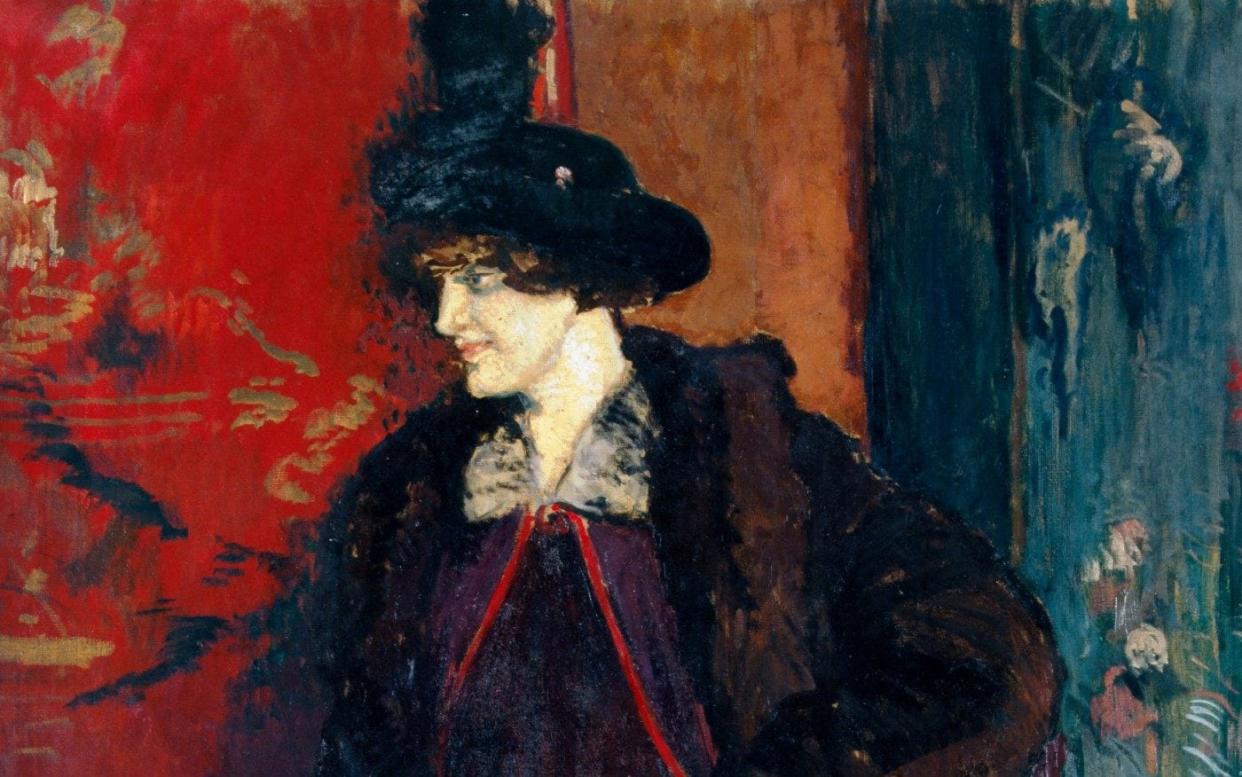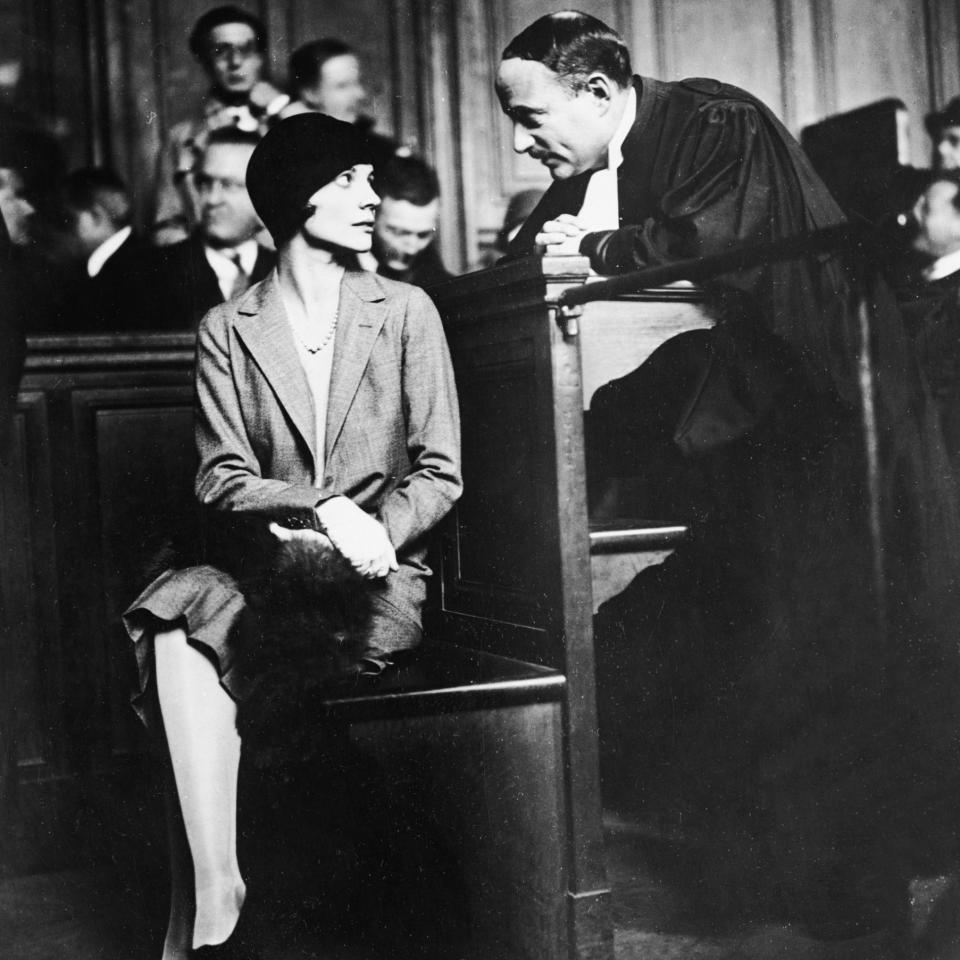The truth about heiresses: why an inheritance damns you for life

- Oops!Something went wrong.Please try again later.
- Oops!Something went wrong.Please try again later.
When the Hon Dorothy Paget, who lived for horse racing, drove to a course where she had a runner, she was so paranoid about arriving on time that she always took two of her Rolls-Royces in case one broke down en route. When, once, both did, she simply handed over £300, then a large sum, for a Baby Austin parked outside a butcher’s shop and went on her way with its owner as her passenger.
Dorothy and her sister Olive had inherited $4 million from their mother, plus another fortune from an uncle in Standard Oil. Both appear in Laura Thompson’s fluent, readable study of wealthy women, Heiresses: The Lives of the Million-Dollar Babies. There is no real theme, as an immense fortune affected all of Thompson’s subjects in different ways. A few, like Angela Burdett-Coutts who, having proposed to and been affectionately rebuffed by the Duke of Wellington, a man old enough to be her grandfather, used it for philanthropic purposes; many just spent it and others rebelled against it. Some of their stories are told in full, others only glancingly.
The 17th- and 18th-century heiress had a tough time of it. Possessor of great wealth only because there was no male heir, once she married, everything she owned – herself, her children, her money – belonged entirely to her husband, who could do with them what he would. From early days she was either a pawn or a target. Unscrupulous fortune-hunters would flatter, cajole and woo a girl garlanded with riches and, if this did not work, often – and quite often successfully – attempt to abduct her.
One such was Ellen Turner, whose father had thought to keep her safe from kidnappers by installing her in a seminary. However, she was tricked out of it by the arrival of a carriage and servant with a note to say her father was dangerously ill and she was to return home. Once in the carriage, she was taken to her abductor, who, through a complicated series of lies, persuaded the bewildered 15-year-old that the only way to save her father from ruin was to marry him at Gretna Green, where English marriage laws did not apply. After a court case, she was freed, and remarried, only to die in childbirth aged 19.
Elopements and clandestine marriages were common – the peak year for Gretna Green, 1854, saw 831 such weddings – since, even if the heiress and the penniless suitor were in love, her family would forbid the union in favour of a better match: such a girl was a bargaining chip. When Mary Davies brought 1,000 acres of central London into the hands of the Grosvenor family, the stupendous wealth this gave them soon advanced them up the peerage to the present dukedom. The ghosts of heiresses haunt other parts of London, too. With Elizabeth Howland came the £100,000 that funded much of the building in Bloomsbury, the land belonging to the Russell family, dukes of Bedford; Charles Cadogan acquired the 250 acres that became Chelsea from his bride, Elizabeth Sloane.
The real watershed was the Married Women’s Property Act of 1882, allowing women to own their own property within a marriage, which granted them a degree of autonomy. It also coincided with the arrival of an army of American heiresses, whose forceful mothers wished them to marry into the British nobility to provide their own key into New York society.
In the 20th century, heiresses had more fun, particularly those who found something to do. For Edwardians such as Mrs Greville and Olive Paget, this was entertaining; here Emerald Cunard, née Maud Burke of San Francisco, was the supreme exemplar. To her table flocked wits, intellectuals, politicians, artists, writers and beauties. She had loved opera from the age of 12 and, when she fell in love with the conductor Sir Thomas Beecham, she used her wealth to promote English opera and give glittering first-night parties for him. For mega-rich Daisy Fellowes, it was seducing other women’s husbands – at the front of her English country house, she had a statue of St Joseph, whom she called “the patron saint of cuckolds”.

Under the heading “Rebels”, Thompson gives us Alice de Janzé, the quintessential wild child – though how much her behaviour owed to her wealth is difficult to say. When she went to Kenya with her French husband, whom she quickly shed along with her children, she fitted perfectly into what was known as the Happy Valley set – rich, aristocratic, given to passionate affairs, outré behaviour and drink. She shot one lover, failing to kill him – and then married him, before finally turning her small revolver on herself. (Here, one caveat: Emerald Cunard’s daughter Nancy, cited as one of these mavericks, though certainly a rebel was no heiress in the sense used by Thompson: like most other girls of her class and kind, she lived on an allowance and inherited only a total of £36,000-odd from her parents.)
The classic “Million Dollar Baby” is of course Barbara Hutton, the Woolworth heiress, who had so much money she hardly knew what to do with it, except spend – $2 million dollars a year on jewellery alone – and marry. Of the seven husbands she picked, all except Cary Grant were fortune-hunters. For, as Thompson rightly says of the heiress, “How is she to know her own basic worth?”
Heiresses: The Lives of the Million-Dollar Babies is published by Apollo at £25. To order your copy for £19.99 call 0844 871 1514 or visit the Telegraph Bookshop

